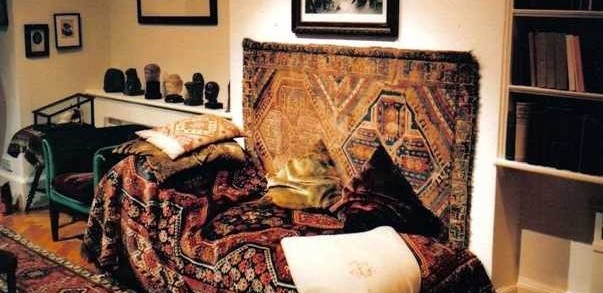
What Does a Therapist's Consulting Room Look Like?
-
What can you expect from the inside of a therapist's consulting room?
-
Therapist Camilla Nicholls shares her own experiences
-
If you are looking for a therapist, you can find one here
The use of promotional photographs of a therapist and/or their consulting room is a relatively recent development.
Many argue that to be seen before a first meeting will affect the 'transference' of a client. Transference is the process by which the patient displaces on to their therapist feelings and ideas that derive from previous figures in their life; loosely speaking, it is the patient's emotional attitude towards their therapist.
Exploring the transference is central to the work and although the psychotherapist's presentation of themselves as a 'blank screen' until the moment of meeting may seem absurdly obtuse to someone seeking help, compromising that position is a serious consideration for the practitioner.
The profession's, albeit slow, move towards taking advantage of the potential of the internet has encouraged the sharing of photographs. I understand the reservations but believe it is a good thing that can potentially reduce anxiety in anyone looking for a therapist. In an assessment recently I asked a patient why she chose me, “After much surfing I thought from your picture you were someone I could talk to, someone who would listen."
Whilst my therapist aimed to throw metaphorical light on my issues I was distracted by the more literal desire to switch lamps on
What largely remains a secret until the last second is how a therapist's consulting room looks.I had seen inside several before I qualified as a therapist myself. Each one came as a surprise. I'd visited Freud's faithfully reconstructed room in the Freud Museum but not before my own first psychotherapy appointment. If I had I would have been better prepared for the heavy damasks, the couch covered in something that seemed more appropriate for the floor, and the darkness. Whilst my therapist aimed to throw metaphorical light on my issues I was distracted by the more literal desire to switch lamps on and see my hand in front of my face. Her spider plants seemed to be breathing their last breath, and I sensed she had ceased to notice them some years before. I struggled in this environment. Week after week I focused on a lump of bird shit on the one uncovered window. If she couldn't clear that problem up, what hope had I?
I saw my next therapist, 'Jenny', for over six years but at first her candles and feathers worried me. These surroundings seemed too hippyish for a media professional dressed all in black. However, she understood me and, more importantly, helped me to gain a better understanding of myself. There was something about the seventies pine, and directors' chairs that spoke to Everyman and Everywoman. I nearly allowed what I regarded as the lack of sophistication to put me off in the early sessions, but I came to feel that, even if we had very different ideas of taste, everything in Jenny's consulting room was carefully chosen and cared about.
My supervisor's room, like my first therapist's, has resonances of Freud's. It is dark with a couch covered by a rug/carpet. But an environment that I once found alienating and caused me to close up now feels comfortingly womb-like. In her space I'm ready to give birth to ideas. I often forget that I am there to seek her advice and support with my patient work, and long to throw myself onto the couch instead of facing her in equal and enveloping chairs.
She has created a world, safe from all that is happening outside, a place where inner thoughts might come unbidden to the surface. In winter a warm fire glows, and this seems right too – sparks of light to break up the mental darkness. A solid, antique desk is in the room, she is a writer as well as an analyst, and a respect for knowledge is apparent. I feel this room seeks enlightenment for all.
A large Ficus Benjamina (who's common name is, appropriately, the Weeping Fig) dominates my current therapist's room. I suspect it has borne witness to many tears. This 'low maintenance' plant might seem an obvious choice for a male therapist, but 'Peter' confounds my sexism by decorating his room with other plants and cut flowers too. There are pictures on the wall, sculptures and books generating a creative air that encourages creative thought.
It shares with Jenny's room some seventies aspects, but, like hers, there is no sense of dereliction, it is scrupulously clean and always warm. I feel I notice everything and that I am very sensitive to change. We spent weeks last year talking about his new chair that I regarded as too big and felt made him look like a Bond villain. But then years into my therapy I commented on what I thought was a new picture only to be told it had been there from the beginning.
When I started my own private practice I considered my experience of these consulting rooms and others to identify what I wanted my space to convey. My background is not only media but arts and aesthetics are important to me. The walls are hung with a significant number of largely non-representative art works, there are cut flowers though no plants as I fear their death. The couch (which is a chair or couch depending on preference) is covered in a rug by a contemporary designer. The room is not dark, but I hope still feels like a contained space. It does speak about me, but I hope does not shout. I hope the loudest thoughts will be those of the patients who share it with me week after week.
Names have been changed to preserve the anonymity of the people mentioned.










